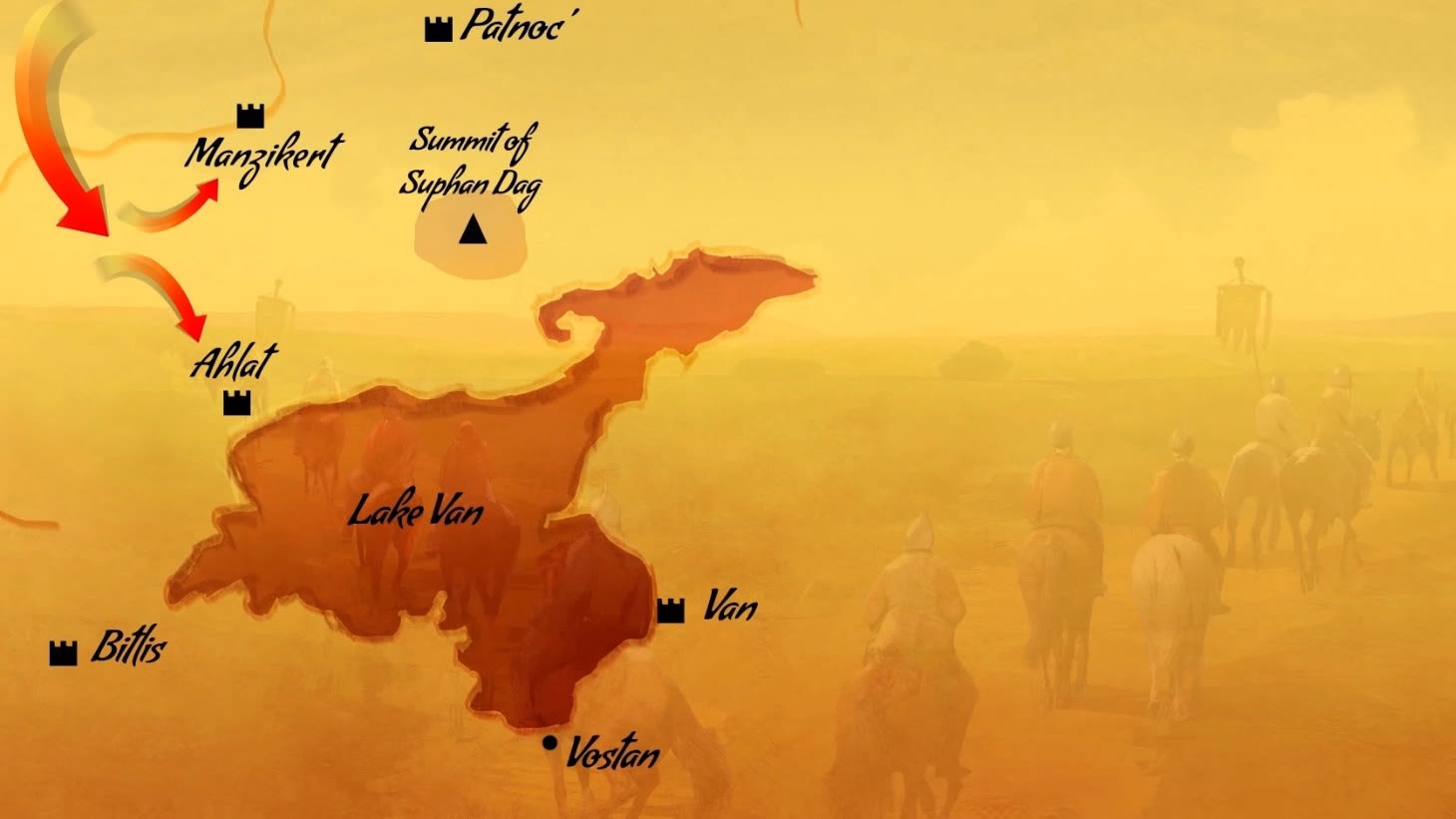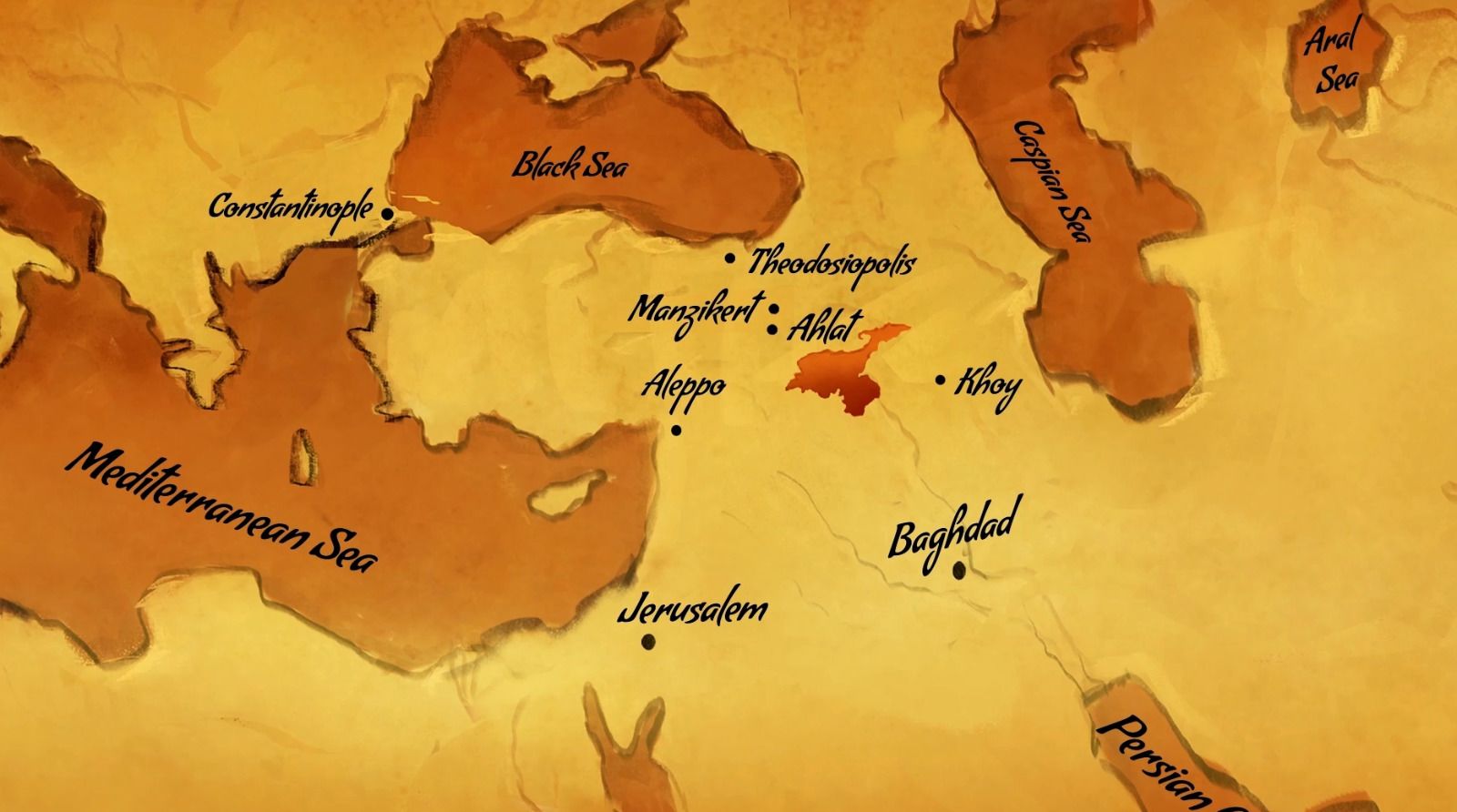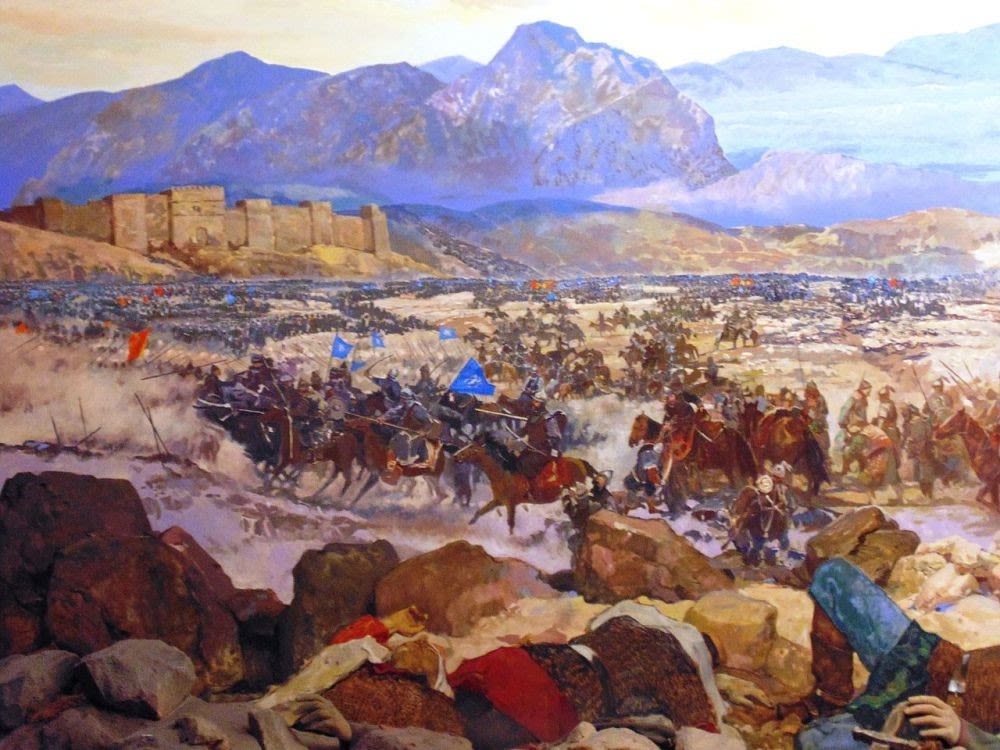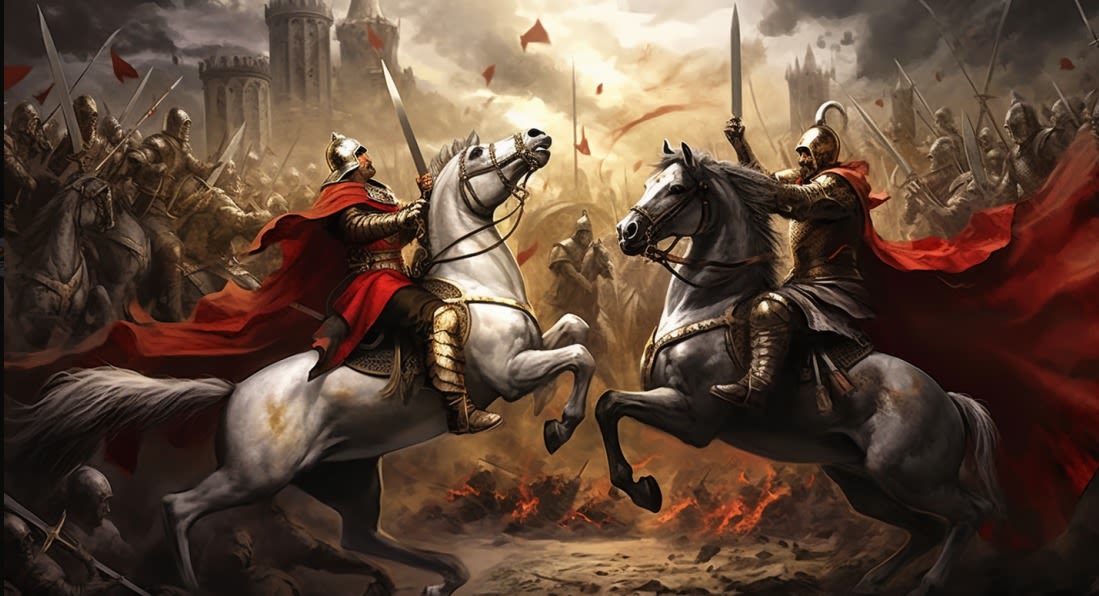Timeline
The Battle of Manzikert

Rise of the Steppe Warriors
Three centuries after the battle of Talas. The Muslim world had changed much over the years, and much was changing. The Abbasids were weak, their Caliph Qaym, was little more than a symbolic figure, who resided in Baghdad watched by the Buyid official Al-Basasiri. The Buyids were a Shia dynasty who had control over Baghdad and its surrounds for close to a century. They had in essence entrapped the ‘Leader of Sunni Islam’.
But political power is ever so fluctuant. The regions East of Baghdad, namely Persia, Khorasan and Transoxania were undergoing volatile change. New, raw and powerful forces were descending from the steppes.
1037-1194CE
The Seljuk Empire
1029CE - Khwarazm
A Prince is Born
He was Muhammad the son of Chaghri and nephew of Tughril, the founding sultan of the Seljuk Empire. History will know him by a different name, Alp Arslan.
1040 CE - Merv, Khorasan
Battle of Dandanqan
The Seljuks achieve a decisive victory, ultimately putting an end to Ghaznavid control over Khorasan.
1055CE - Baghdad
Seljuk Sultan Tughril defeats the Buyids and marches into Baghdad, with approval from the Abbasid Caliph al-Qa'im.
1063CE - Ray
Death of Sultan Tughril
Alp Arslan becomes the Seljuk Sultan
Byzantine Betrayal
In 1067CE Romanus IV Diogenes becomes Byzantine Emperor.
In February 1071, Romanos sent envoys to Arp Arslan to renew the 1069 treaty signed between the Byzantine and Seljuk empires, to which Arp Arslan agreed.
However, the peace treaty had been a deliberate distraction.
1071CE Spring
Byzantine March to Manzikert
Romanus leads the Imperial army, commanding the largest Byzantine force in a march against the Muslims, a gathering unseen since their crushing defeat at the battle of Yarmuk in 636CE, against the forces of the Rightly Guided Khalifate.
Romanus marches into Theodosiopolis (Erzurum)
1071CE Aleppo
Outside the city walls of Aleppo, Nizamul Mulk comes rushing to Sultan Alp Arslan with news from the north!
Alp Arslan lifts the siege of Aleppo, coming to an understanding with Amir Mahmud, they both understood the catastrophic ramifications of a successful Byzantine campaign deep into Muslim territory.
April 1071CE
Alp Arslan headed East with his forces, he had to make his way back to Khorasan as quickly as possible. The Byzantines had a head start, Alp Arslan had to move quickly in his preparations to face off against Romanus.
Alp Arslan's army had to make the perilous crossing across the flooding Euphrates and then through the narrow rugged mountain tracks dripping with melted snow to get back to Khoy.
June 1071
March to Khoy
The passage to Khoy would not be easy. Along the way Alp Arslan's men had to traverse rocky tract and cross many more rivers. In the rush to get to Khoy, many more men were lost. By early summer, Alp Arslan with his army reached Khoy, a city in the Azerbaijan region that had large flat plains for their horses to graze. It was a traditional mustering ground.
The faithful Nizamul Mulk was deployed to gather as many recruits as possible from the neighbouring cities of Tabriz, Hamadan, Isfahan, and if he had to, Baghdad itself.
In Khoy Alp Arslan was sending out messages to all the neighbouring tribes, especially the Turkic ones. He declared he would be fighting as a Ghazi, solely for the sake of Islam and the Muslims and not for the Seljuk cause.
Meanwhile in Theodosiopolis Romanus was making his final preparations before marching towards Manzikert. His intelligence reports indicated that Alp Arslan fled to Baghdad after being routed in Aleppo. In his ignorance, his confidence grew ever more so.


Approaching Manzikert
The Byzantine and Seljuk forces are approaching Manzikert.


August 1071
Byzantines Reach Manzikert
Romanus marched through Khnus, towards Lake Van, expecting to retake Manzikert quickly and the nearby fortress of Ahlat, thinking Alp Arslan was further away or not coming at all!
He ordered his general Joseph Tarchaniotes with regular troops, and the Varangians with the Pechenegs and Franks to take Ahlat.
Romanos and the rest of the army marched to Manzikert, arriving outside its walls on 22 August, and captured the city on the 23rd.
Alp Arslan's Swift Move
Alp Arslan's Vanguard Force moves to Ahlat, which Tarchaniotes and Romanus did not anticipate.
Their swift deployment out of Khoy allowed them to intercept the Byzantine segment at Ahlat, on the very day the Byzantines were celebrating their victory at Manzikert.
A ferocious battle ensued, forcing the Byzantines under Tarchaniotes to flee. Strategic positioning of the Turkish forces prevented Tarchaniotes from regrouping with the Emperor.
27 Dhul-Qada 463AH / 26 Aug 1071CE
Day of the Battle
Morning of Friday, the Byzantines assembled in their battle ranks began their march towards the Muslims.The Byzantine army consisted of the left and right flanks, a central core, and a rearguard.
The Muslim army was organised in a crescent formation, with a core and two flanks. The centre of their crescent continually moved backwards while the wings moved to surround the Byzantine troops. Other troops were hidden strategically as traps and ambushes among the nearby hills.
Romanos was forced to order a withdrawal by nightfall. However, in the confusion that ensued, the right wing was in disarray and rearguard out of position, which opened spaces to exploit, the feigned retreat by Alp Arslan was over, as the core of the Muslim army attacked the Byzantine center with tremendous force and speed. The rest of the Muslim army attacked the right flank which was the first to cave in and flee, as did the rear guard, and the left wing was also soon routed and cutoff from the Byzantine centre isolating the Emperor, along with his Varangian guard and Imperial units.
Before the end of the day, the battle was over, the Muslims were victorious. Romanus was captured by the Seljuks, and the professional core of the Byzantine army had been destroyed.

